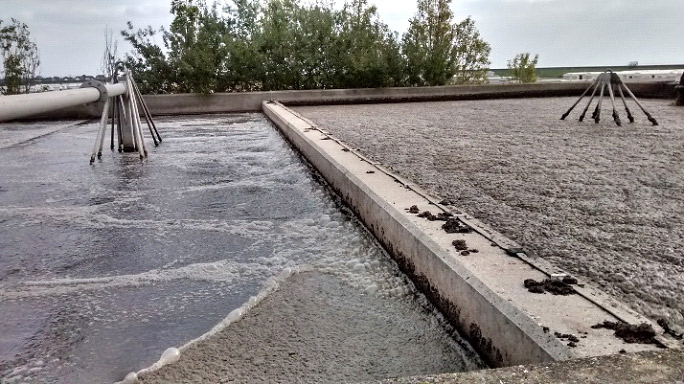DEMONSTRATIONS
DEMONSTRATIONS
Wick St Lawrence sewage treatment works Trial
Wessex Water’s Wick St Lawrence plant receives flow from about 20,000PE, and is located a few miles north of Weston-super-Mare, Somerset, UK. The wastewater treatment process includes screens, primary settlement tanks, an oxidation ditch, secondary tanks and final polishing lagoons before its effluent is discharged into coastal waters. The controlling aeration for the ASP is supplied by four 15kW surface aerators with a target DO of 1.5mg/l O2. Prior to the Oxifiniti trial, Wessex Water had installed additional temporary surface aeration to meet peak demand.
Trial Objectives
The main objective was to compare the Oxfiniti box (max 40kW) performance against the four surface aerators (max 60kW). This was to be achieved by: –
-
Quantifying aeration energy savings;
-
Identifying other operational savings;
-
Observing health improvements in the oxidation ditch, secondary clarifiers and on sludge;
-
Identifying other significant benefits regarding maintenance, Health & Safety issues etc. which were not quantified.
Trial Results
Energy Savings, Reduced Carbon emissions and Power – A total energy saving of 21% (258 kWh) a day and hence reduced Carbon emissions. Unlike the existing 4 surface aerators the Oxfiniti box O2 output was a constant base load and was not optimised to obtain maximum savings. The max. power of the Oxfiniti box was 40kW, whereas the surface aerators max. was 60kW;
Water Quality and Plant Health – the oxidation ditch and the secondary clarifiers both showed visual improvements in appearance. A result of healthier micro-organisms.

Thames Water Performance Trial
The Oxfiniti treatment process was set up at a Thames Water wwtw oxidation ditch site outside of London. The site was suffering from intermittent filamentous bacteria problems. But as soon as the Oxfiniti process injected oxygen into the ditch the mousse layer broke down.

Results
The trial demonstrated energy savings, reduced sludge handling costs and ease of operation.
1-Ammonia /Filamentous Bacteria Treatment
The Oxfiniti process has shown its affinity to oxidise ammonia very quickly and breakdown surface ‘mousse’ caused by filamentous bacteria.
2-Water Quality and Plant Health – The oxidation ditch and the secondary clarifiers both showed visual improvements in appearance. A result of healthier micro-organism activity.
Contractors
Contract 1 – Anglian Water
Supplementary Treatment During FBD Maintenance
Working with an Anglian Water contractor, O2NRG and its partner Euroby were tasked with setting up a supplementary oxygen supply to facilitate treatment in an ASP basin during the routine maintenance of fine bubble diffusers. The Oxfiniti process which has a small footprint was set up alongside the basin away from the main contractors equipment delivering a constant 40kg O2 per hour 24/7 for 6 weeks.


